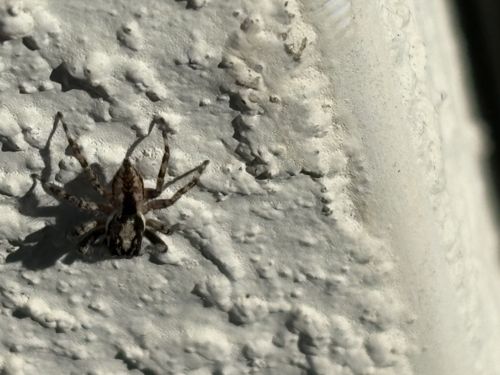Jumping Spider
Scientific Name: Salticidae (Family)
Order & Family: Araneae (Order), Salticidae (Family)
Size: Typically small, ranging from 1 mm to 25 mm in body length, with most species being between 3 mm and 15 mm.

Natural Habitat
Widely distributed globally, found in diverse habitats including forests, grasslands, deserts, urban areas, and even polar regions. Often seen on vertical surfaces like walls, fences, and tree trunks.
Diet & Feeding
Jumping spiders are predatory. They primarily feed on various small insects, such as flies, mosquitoes, and small caterpillars. They are ambush predators and do not build webs to catch prey, instead, they stalk and pounce on their victims.
Behavior Patterns
Known for their excellent eyesight, especially the two large forward-facing eyes that provide binocular vision and depth perception. They are active hunters during the day, using their precise vision to locate and track prey before making a characteristic sudden leap. They can jump many times their own body length and use a silk safety line as they jump. Many species also display complex courtship rituals involving elaborate dances and visual signals.
Risks & Benefits
Potential Risks: Jumping spiders are not considered dangerous to humans. While they can bite if provoked or threatened, their venom is not medically significant and typically causes only mild, localized pain and irritation, similar to a bee sting. Potential Benefits: They are beneficial predators in many ecosystems, helping to control populations of various insect pests in gardens and homes. They play a role in natural pest control without the need for chemical intervention.
Identified on: 9/6/2025